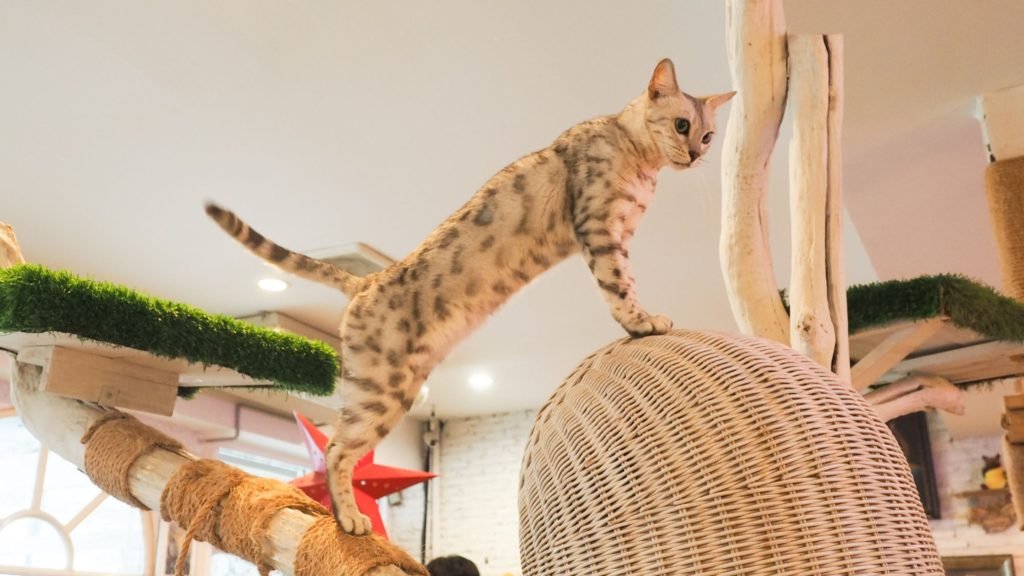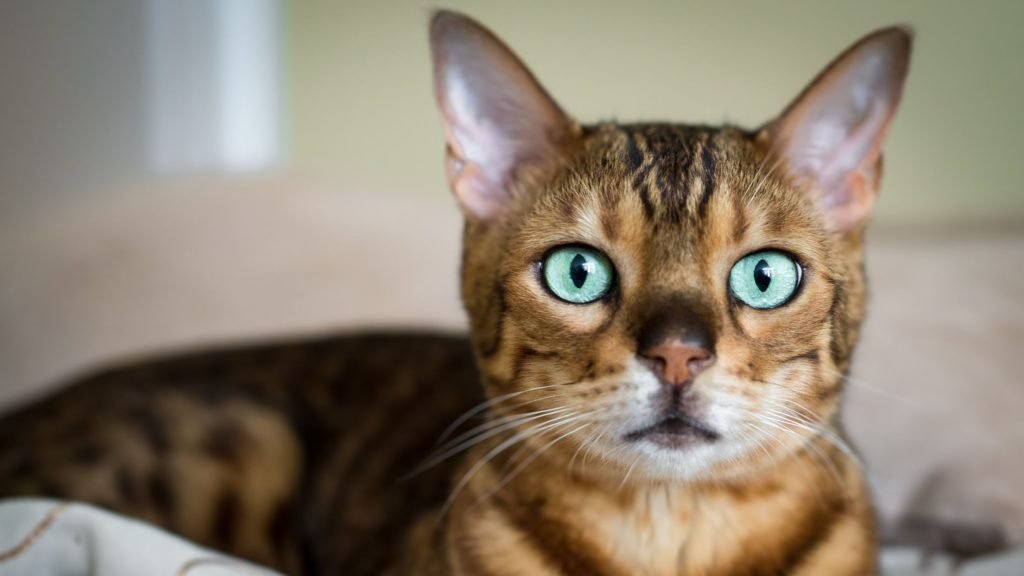Bengal Cat Hypoallergenic – Learn how Bengal cats can bring joy and companionship to allergic pet lovers with their unique hypoallergenic qualities.
Overview of Bengal Cats
Common Cat Allergies and Their Causes
Fel d 1, a protein in cat saliva, skin, and fur, causes many cat allergies. When cats groom themselves, this protein spreads onto their hair, eventually becoming airborne, causing allergic reactions in susceptible individuals.
Introduction to the Concept of Hypoallergenic
Cat Breeds The term “hypoallergenic” describes cat breeds that are less likely to cause allergic reactions than other breeds. These hypoallergenic breeds typically produce fewer allergens, making them a better option for those with cat allergies. However, it’s essential to note that no cat breed is entirely allergen-free.

Bengal Cat Characteristics
Physical Traits and Appearance
Bengal cats are known for their athletic build, muscular body, and sleek, short coat. Their coat features striking patterns like marbling or spots resembling wild cats. Their eyes are typically almond-shaped and can be in various colors, such as green, gold, or blue.
Personality and Temperament
Bengals are highly active, intelligent, and social cats. They thrive on attention and interaction with their human companions. Bengal cats are also known for their curiosity, playfulness, and ability to form strong bonds with their owners.
Health and Lifespan
Bengal cats are generally healthy, with a lifespan ranging from 12 to 16 years. However, they can be prone to specific health issues, such as hypertrophic cardiomyopathy (HCM), progressive retinal atrophy (PRA), and patellar luxation. Regular vet check-ups and proper care can help maintain their overall well-being.
Allergens and Bengal Cats
Fel d 1 Protein and Its Role in Cat Allergies
Cat saliva, skin, and fur contain the Fel d 1 protein, which causes allergic reactions in humans. When cats groom themselves, the protein spreads to their coat and becomes airborne as their hair sheds, leading to allergic reactions in sensitive individuals.
Bengal Cat’s Unique Coat and Grooming Habits
Bengal cats have short, dense coat that requires minimal grooming. Their fur is known for its “pelt-like” feel and does not shed much as other breeds. Bengals also groom themselves less, which may reduce the amount of Fel d 1 protein on their fur.
Lower Allergen Production in Bengal Cats
Bengal cats create fewer allergies than other breeds, although no cat breed is entirely hypoallergenic. That is due to their unique coat and grooming habits, which minimize the spread of Fel d 1 protein. Unfortunately, allergy sensitivities vary; what one person may tolerate may not be for another.

You May Also Interest: Cat Breeds That Don’t Shed: The World of Low-Shedding Felines
Hypoallergenic Traits of Bengal Cats
Reasons Behind Bengal Cats’ Hypoallergenic Status
Bengal cats are considered hypoallergenic for several reasons. Their short, dense coat and minimal grooming requirements contribute to reduced shedding, decreasing the spread of Fel d 1 protein. Also, some research indicates that Bengal cats may manufacture less Fel d 1 protein than other breeds. Although no cat breed is 100% hypoallergenic, Bengals are better for cat allergy sufferers.
Comparison to Other Hypoallergenic Cat Breeds
Several hypoallergenic cat breeds may be acceptable for allergy sufferers besides Bengal cats. Some popular hypoallergenic breeds include the Siberian, Balinese, Russian Blue, and Cornish Rex. Each species has unique characteristics and allergen production levels, which may affect an individual’s reaction differently. Cat allergy sufferers must spend time with them to find the best hypoallergenic cat breed for their sensitivities.
You May Also Interest: Why Your Cat is Getting Hairballs and How to Prevent Them
Managing Cat Allergies with Bengal Cats
Tips for Reducing Allergens in Your Home
Even with a hypoallergenic breed like the Bengal cat, minimizing allergens in your home is essential. Frequent vacuuming and dusting, using air purifiers with HEPA filters, and washing your cat’s bedding can help reduce allergen levels. Additionally, consider designating certain areas of your home as pet-free zones, like your bedroom, to limit exposure to allergens further.
Regular Grooming and Care for Bengal Cats
While Bengal cats have lower maintenance coats than other breeds, regular grooming can help reduce allergens. Brush your Bengal cat at least once a week to remove loose hair and dander. Frequent spot cleaning with a damp cloth can also help remove allergens from their coat. Make sure to clean their litter box daily and provide a balanced diet to maintain overall health.
Consulting with an Allergist before Adopting a Bengal Cat
Before adopting a Bengal cat, it’s crucial to consult with an allergist to determine the severity of your allergies and to discuss potential strategies for managing them. Spending time with a Bengal cat before adoption can help gauge your reaction to the breed. Remember that individual responses to different species may vary, and hypoallergenic cats are not guaranteed to be allergy-free for everyone.

You May Also Interest: Claw-some Techniques on How to Groom a Cat
Adopting a Bengal Cat
Finding a Reputable Breeder or Rescue Organization
When considering adopting a Bengal cat, finding a reputable breeder or rescue organization is essential. Choose reputable breeders with a track record of producing healthy kittens in your area. A reputable breeder should be able to provide health records, information on the cat’s lineage, and proof of genetic testing for common health issues. Alternatively, you may also find Bengal cats available for adoption through rescue organizations or breed-specific rescues.
Assessing the Compatibility of a Bengal Cat with Your Lifestyle
Before adopting a Bengal cat, evaluate whether this breed fits your lifestyle well. Bengal cats are energetic, intelligent, and social animals that require plenty of mental and physical stimulation. They enjoy interactive play, climbing, and exploring their environment. A Bengal cat may be an excellent match for you if you can provide an engaging home with plenty of activity and attention.
Preparing Your Home for a Hypoallergenic Feline Companion
Once you’ve decided to adopt a Bengal cat, preparing your home for your new hypoallergenic feline companion is essential. Set up a designated area with a comfortable bed, litter box, food and water dishes, and toys. Ensure your home is cat-proofed by removing potential hazards and securing breakable items. Lastly, establish a consistent routine for grooming and cleaning to maintain a hypoallergenic environment and keep your Bengal cat healthy and happy.

